Think that you may own a portrait of George Washington? We authenticate, appraise and issue Certificates of Authenticity (COA) for all portraits of George Washington.
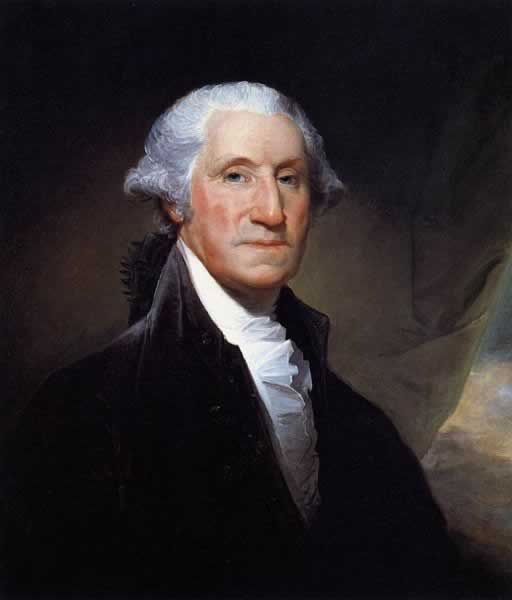
George Washington by Gilbert Stuart, 1795
George Washington was the first President of the United States, (1789-1797), after leading the Continental Army to victory over the Kingdom of Great Britain in the American Revolutionary War (1775-1783).
Washington was chosen to be the commander-in-chief of the American revolutionary forces in 1775. The following year, he forced the British out of Boston, but was defeated when he lost New York City later that year. He revived the patriot cause, however, by crossing the Delaware River in New Jersey and defeating the surprised enemy units. As a result of his strategy, Revolutionary forces captured the two main British combat armies - Saratoga and Yorktown. Negotiating with Congress, the colonial states, and French allies, he held together a tenuous army and a fragile nation amid the threats of disintegration and failure. Following the end of the war in 1783, Washington retired to his plantation on Mount Vernon.
Alarmed in the late 1780s at the many weaknesses of the new nation under the Articles of Confederation, he presided over the Philadelphia Convention that drafted the United States Constitution in 1787. Washington became President of the United States in 1789 and established many of the customs and usages of the new government's executive department. He sought to create a great nation capable of surviving in a world torn asunder by war between Britain and France. His Proclamation of Neutrality of 1793 provided a basis for avoiding any involvement in foreign conflicts. He supported plans to build a strong central government by funding the national debt, implementing an effective tax system, and creating a national bank. Washington avoided the temptation of war and began a decade of peace with Britain via the Jay Treaty in 1795; he used his prestige to get it ratified over intense opposition from the Jeffersonians. Although never officially joining the Federalist Party, he supported its programs and was its inspirational leader. Washington's farewell address was a primer on republican virtue and a stern warning against involvement in foreign wars.
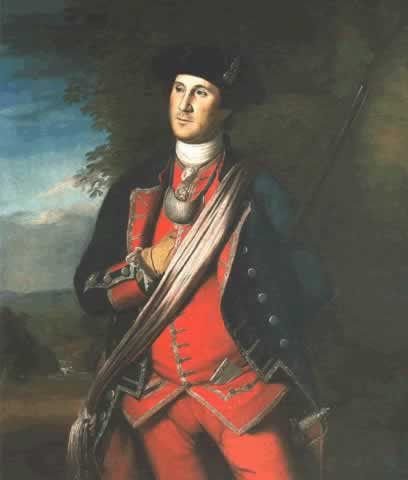
George Washington by Charles Willson Peale, 1772 *This is the earliest known depiction of Washington that art historians have discovered so far
Washington is seen as a symbol of the United States and republicanism in practice. His devotion to civic virtue made him an exemplary figure among early American politicians. Washington died in 1799, and in his funeral oration, Henry Lee said that of all Americans, he was "first in war, first in peace, and first in the hearts of his countrymen." Washington has been consistently ranked by scholars as one of the greatest U.S. Presidents.
George Washington was born on February 22, 1732, the first son of Augustine Washington and his second wife, Mary Ball Washington, on the family's Pope's Creek Estate near present-day Colonial Beach in Westmoreland County, Virginia. He was educated in the home by his father and older brother.
In his youth, Washington worked as a surveyor, and acquired what would become invaluable knowledge of the terrain around his native state of Virginia. Washington embarked upon a career as a planter and in 1748 was invited to help survey Baron Fairfax's lands west of the Blue Ridge. In 1749, he was appointed to his first public office, surveyor of newly created Culpeper County, and through his half-brother, Lawrence Washington, he became interested in the Ohio Company, which aimed to exploit Western lands. In 1751, George and his half-brother traveled to Barbados, staying at Bush Hill House, hoping for an improvement in Lawrence's tuberculosis. This was the only time George Washington traveled outside what is now the United States. After Lawrence's death in 1752, George inherited part of his estate and took over some of Lawrence's duties as adjutant of the colony.
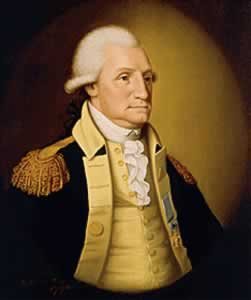
George Washington in General uniform, artist unknown
Washington was appointed a district adjutant general in the Virginia militia in 1752, which made him Major Washington at the age of 20. He was charged with training the militia in the quarter assigned him. At age 21, in Fredericksburg, Washington became a Master Mason in the organization of Freemasons, a fraternal organization that was a lifelong influence.
In December 1753, Washington was detailed by Governor Robert Dinwiddie of Virginia to carry a British ultimatum to the French on the Ohio frontier. Washington assessed French military strength and intentions, and to delivered the message to the French at Fort Le Boeuf in present day Waterford, Pennsylvania. The message, which went unheeded, called for the French to abandon their development of the Ohio country, setting in motion two colonial powers toward worldwide conflict. Washington's report on the affair was widely read on both sides of the Atlantic.
In 1754, Dinwiddie commissioned Washington a lieutenant colonel and ordered him to lead an expedition to Fort Duquesne to drive out the French. With his American Indian allies led by Tanacharison, Washington and his troops ambushed a French scouting party of some 30 men, led by Joseph Coulon de Jumonville. Washington and his troops were overwhelmed at Fort Necessity by a larger and better positioned French and Indian force. The terms of surrender included a statement that Washington had assassinated the scouts and their leader at the Battle of Jumonville Glen. Released by the French, Washington returned to Virginia, where he resigned rather than accept demotion.

George Washington in military uniform by Rembrandt Peale
In 1755, Washington was an aide to British General Edward Braddock on the ill-fated Monongahela expedition. This was a major effort to retake the Ohio Country. While Braddock was killed and the expedition ended in disaster, Washington distinguished himself as the Hero of the Monongahela. While Washington's role during the battle has been debated, biographer Joseph Ellis asserts that Washington rode back and forth across the battlefield, rallying the remnant of the British and Virginian forces to a retreat. Subsequent to this action, Washington was given a difficult frontier command in the Virginia mountains, and was rewarded by being promoted to colonel and named commander of all Virginia forces.
In 1758, Washington participated as a brigadier general in the Forbes expedition that prompted French evacuation of Fort Duquesne, and British establishment of Pittsburgh. Later that year, Washington resigned from active military service and spent the next sixteen years as a Virginia planter and politician.

George Washington bust by Giuseppe Ceracchi
George Washington was introduced to Martha Dandridge Custis, a widow who was living at the White House Plantation on the south shore of the Pamunkey River in New Kent County, Virginia, by friends of Martha when George was on leave from the French and Indian War. George only visited her home twice before proposing marriage to her 3 weeks after they met. George and Martha were each 27 years old when they married on January 6, 1759 at her home, known as The White House, which shared its name with the future presidential mansion. The newlywed couple moved to Mount Vernon, where he took up the Tuckahoe life of a genteel planter and political figure. They had a good marriage, and together, they raised her two children by her previous marriage to Daniel Parke Custis, John Parke Custis and Martha Parke Custis, affectionately called "Jackie" and "Patsy." George and Martha never had any children together-an earlier bout with smallpox followed, possibly, by tuberculosis may have left him sterile. Later the Washingtons raised two of Mrs. Washington's grandchildren, Eleanor Parke Custis ("Nelly") and George Washington Parke Custis ("Washy") after their father died in 1781.
Washington's marriage to a wealthy widow greatly increased his property holdings and social standing. He acquired one-third of the 18,000 acre (73 km2) Custis estate upon his marriage, and managed the remainder on behalf of Martha's children. He frequently purchased additional land in his own name, and was granted land in what is now West Virginia as a bounty for his service in the French and Indian War. By 1775, Washington had doubled the size of Mount Vernon to 6,500 acres (26 km2), with over 100 slaves. As a respected military hero and large landowner, he held local office and was elected to the Virginia provincial legislature, the House of Burgesses, beginning in 1758, and he served as a justice of Fairfax, and held court in Alexandria, Virginia between 1760 and 1774.
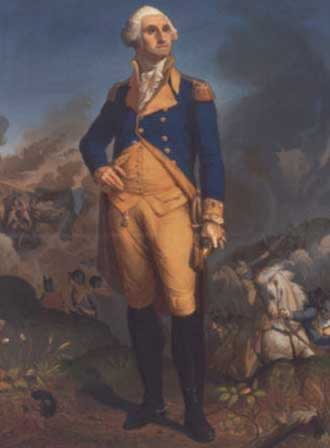
George Washington, standing portrait, artist unknown
Washington first took a leading role in the growing colonial resistance in 1769, when he introduced a proposal drafted by his friend George Mason which called for Virginia to boycott imported English goods until the Townshend Acts were repealed. Parliament repealed the Acts in 1770. Washington also took an active interest in helping his fellow citizens. On September 21, 1771 Washington wrote a letter to Neil Jameson on behalf of Jonathan Plowman Jr., a merchant from Baltimore whose ship had been seized for exporting non-permitted items by the Boston Frigate, and requested his help toward recovery of Plowman's ship. Washington regarded the passage of the Intolerable Acts in 1774 as "an Invasion of our Rights and Privileges." In July 1774, he chaired the meeting at which the Fairfax Resolves were adopted, which called for, among other things, the convening of a Continental Congress. In August, he attended the First Virginia Convention, where he was selected as a delegate to the First Continental Congress.
After fighting broke out in April 1775, Washington appeared at the Second Continental Congress in military uniform, signaling that he was prepared for war. Washington had the prestige, the military experience, the charisma and military bearing, the reputation of being a strong patriot, and he was supported by the South, especially Virginia. Although he did not explicitly seek the office of commander and even claimed that he was not equal to it, there was no serious competition. Congress created the Continental Army on 1775-06-14; the next day, on the nomination of John Adams of Massachusetts, Washington was appointed Major general and elected by Congress to be commander in chief.
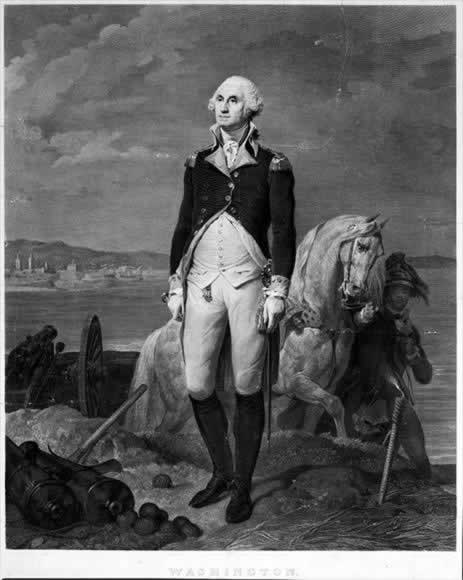
George Washington engraving after a painting by Leon Cogniet, 1839
Washington assumed command of the Continental Army in the field at Cambridge, Massachusetts in July 1775, during the ongoing siege of Boston. Realizing his army's desperate shortage of gunpowder, Washington asked for new sources. British arsenals were raided (including some in the Caribbean) and some manufacturing was attempted; a barely adequate supply (about 2.5 million pounds) was obtained by the end of 1776, mostly from France. Washington reorganized the army during the long standoff, and forced the British to withdraw by putting artillery on Dorchester Heights overlooking the city. The British evacuated Boston and Washington moved his army to New York City.
Although negative toward the patriots in the Continental Congress, British newspapers routinely praised Washington's personal character and qualities as a military commander.[26] Moreover, both sides of the aisle in Parliament found the American general's courage, endurance, and attentiveness to the welfare of his troops worthy of approbation and examples of the virtues they and most other Britons found wanting in their own commanders. Washington's refusal to become involved in politics buttressed his reputation as a man fully committed to the military mission at hand and above the factional fray.
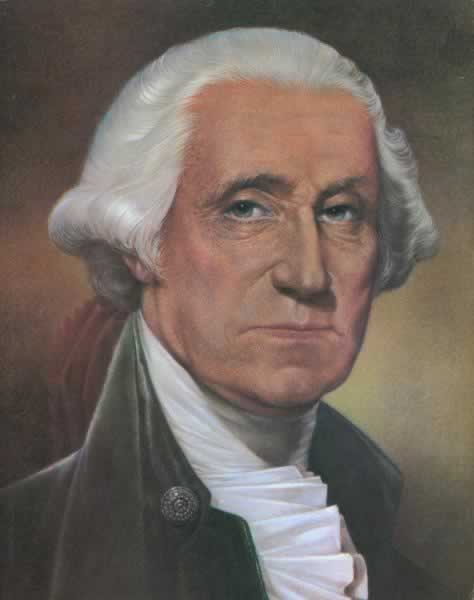
George Washington, artist unknown
In August 1776, British General William Howe launched a massive naval and land campaign designed to seize New York and offer a negotiated settlement. The Continental Army under Washington engaged the enemy for the first time as an army of the newly-declared independent United States at the Battle of Long Island, the largest battle of the entire war. This and several other British victories (despite some American victories at the Battle of Harlem Heights and elsewhere) sent Washington scrambling out of New York and across New Jersey, leaving the future of the Continental Army in doubt. On the night of December 25, 1776, Washington staged a counterattack, leading the American forces across the Delaware River to capture nearly 1,000 Hessians in Trenton, New Jersey.
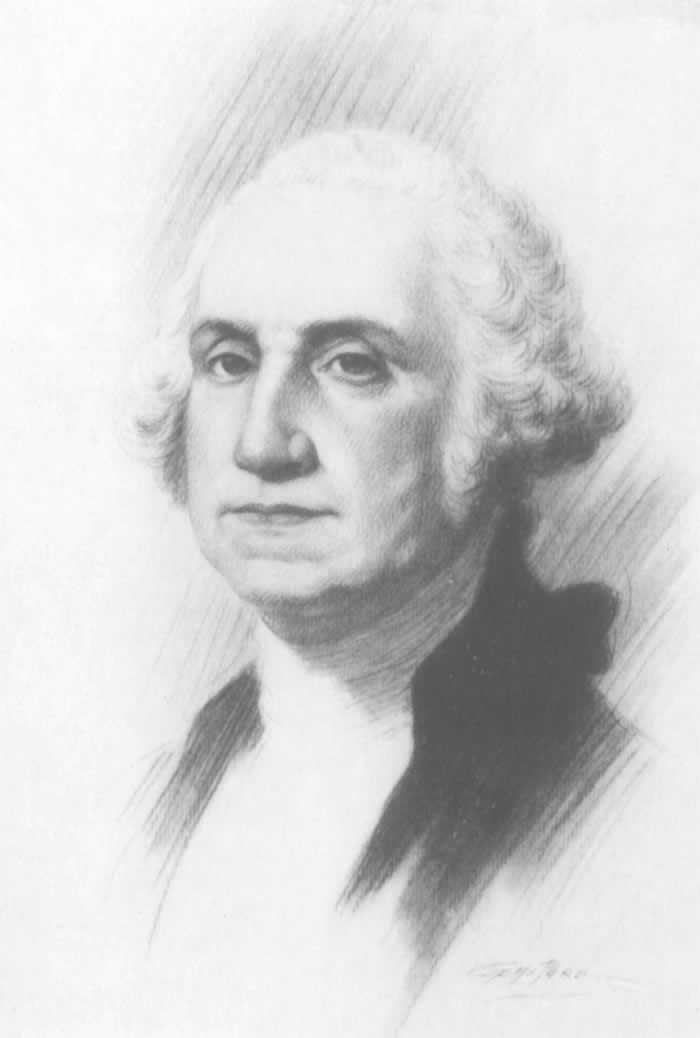
George Washington engraving, artist unknown
Washington was defeated at the Battle of Brandywine on September 11, 1777. On September 26, Howe outmaneuvered Washington and marched into Philadelphia unopposed. Washington's army unsuccessfully attacked the British garrison at Germantown in early October. Meanwhile Burgoyne, out of reach from help from Howe, was trapped and forced to surrender his entire army at Saratoga, New York. As a result of this battle, France entered the war as an open ally of the Americans, turning the Revolution into a major world-wide war. Washington's loss of Philadelphia prompted some members of Congress to discuss removing Washington from command. This episode failed after Washington's supporters rallied behind him.
Washington's army encamped at Valley Forge in December 1777, where it stayed for the next six months. Over the winter, 2,500 men (out of 10,000) died from disease and exposure. The next spring, however, the army emerged from Valley Forge in good order, thanks in part to a full-scale training program supervised by Baron von Steuben, a veteran of the Prussian general staff. The British evacuated Philadelphia in 1778 and returned to New York City. Meanwhile, Washington remained with his army outside New York, and in the summer of 1779, at Washington's direction, General John Sullivan, in retaliation for Iroquois and Tory attacks against American settlements earlier in the war, carried out a decisive scorched earth campaign that destroyed at least forty Iroquois villages throughout what is now upstate New York. He delivered the final blow in 1781, after a French naval victory allowed American and French forces to trap a British army in Virginia. The surrender at Yorktown on October 17, 1781 marked the end of fighting. Though known for his successes in the war and of his life that followed, Washington only won three of the nine battles that he fought.
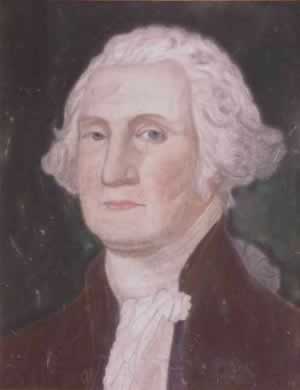
George Washington, 1789, pastel, artist unknown
In March 1783, Washington used his influence to disperse a group of Army officers who had threatened to confront Congress regarding their back pay. The Treaty of Paris (signed that September) recognized the independence of the United States. Washington disbanded his army and, on November 2, gave an eloquent farewell address to his soldiers. On November 25, the British evacuated New York City, and Washington and the governor took possession. At Fraunces Tavern on December 4, Washington formally bade his officers farewell and on December 23, 1783, he resigned his commission as commander-in-chief, emulating the Roman general Cincinnatus, an exemplar of the republican ideal of citizen leadership who rejected power. During this period, the United States was governed under the Articles of Confederation without a President; governmental organization was different from the present form.
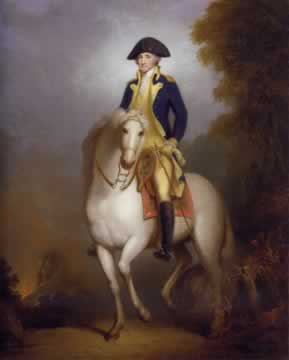
George Washington equestrian portrait by Rembrandt Peale
Washington's retirement to Mount Vernon was short-lived. He made an exploratory trip to the western frontier in 1784, was persuaded to attend the Constitutional Convention in Philadelphia in the summer of 1787, and was unanimously elected president of the Convention. He participated little in the debates involved (though he did vote for or against the various articles), but his high prestige maintained collegiality and kept the delegates at their labors. The delegates designed the presidency with Washington in mind, and allowed him to define the office once elected. After the Convention, his support convinced many, including the Virginia legislature, to vote for ratification; the new Constitution was ratified by all 13 states.
The Electoral College elected Washington unanimously in 1789, and again in the 1792 election; he remains the only president to receive 100% of electoral votes. John Adams was elected vice president. Washington took the oath of office as the first President under the Constitution for the United States of America on April 30, 1789 at Federal Hall in New York City although, at first, he had not wanted the position.
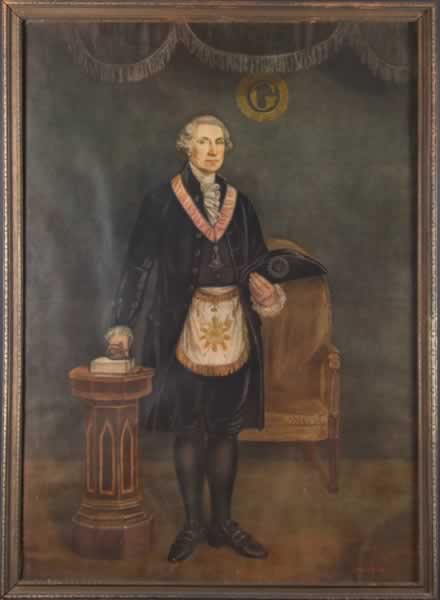
George Washington in Masonic clothing
The 1st United States Congress voted to pay Washington a salary of $25,000 a year-a large sum in 1789. Washington, already wealthy, declined the salary, since he valued his image as a selfless public servant. At the urging of Congress, however, he ultimately accepted the payment. A dangerous precedent could have been set otherwise, as the founding fathers wanted future presidents to come from a large pool of potential candidates - not just those citizens that could afford to do the work for free.
Washington attended carefully to the pomp and ceremony of office, making sure that the titles and trappings were suitably republican and never emulated European royal courts. To that end, he preferred the title "Mr. President" to the more majestic names suggested.
Washington proved an able administrator. An excellent delegator and judge of talent and character, he held regular cabinet meetings to debate issues before making a final decision. In handling routine tasks, he was "systematic, orderly, energetic, solicitous of the opinion of others but decisive, intent upon general goals and the consistency of particular actions with them."
Washington reluctantly served a second term as president. He refused to run for a third, establishing the customary policy of a maximum of two terms for a president which later became law by the 22nd Amendment to the Constitution.

George Washington at the Portrait Gallery, Philadelphia
Washington was not a member of any political party, and hoped that they would not be formed out of fear of the conflict and stagnation they could cause governance. His closest advisors, however, formed two factions, setting the framework for the future First Party System. Secretary of Treasury Alexander Hamilton had bold plans to establish the national credit and build a financially powerful nation, and formed the basis of the Federalist Party. Secretary of State Thomas Jefferson, founder of the Jeffersonian Republicans, strenuously opposed Hamilton's agenda, but Washington favored Hamilton over Jefferson.
In 1791, Congress imposed an excise on distilled spirits, which led to protests in frontier districts, especially Pennsylvania. By 1794, after Washington ordered the protesters to appear in U.S. district court, the protests turned into full-scale riots known as the Whiskey Rebellion. The federal army was too small to be used, so Washington invoked the Militia Law of 1792 to summon the militias of Pennsylvania, Virginia and several other states. The governors sent the troops and Washington took command, marching into the rebellious districts.[33] There was no fighting, but Washington's forceful action proved the new government could protect itself. It also was one of only two times that a sitting President would personally command the military in the field: the other was after President James Madison fled the burning White House in the War of 1812. These events marked the first time under the new constitution that the federal government used strong military force to exert authority over the states and citizens.
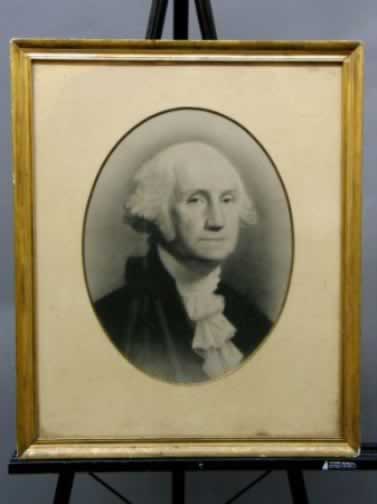
George Washington, charcoal portrait, artist unknown
In 1793, the revolutionary government of France sent diplomat Edmond-Charles Genêt, called "Citizen Genêt," to America. Genêt issued letters of marque and reprisal to American ships so they could capture British merchant ships. He attempted to turn popular sentiment towards American involvement in the French war against Britain by creating a network of Democratic-Republican Societies in major cities. Washington rejected this interference in domestic affairs, demanded the French government recall Genêt, and denounced his societies.
To normalize trade relations with Britain, remove them from western forts, and resolve financial debts left over from the Revolution, Hamilton and Washington designed the Jay Treaty. It was negotiated by John Jay, and signed on November 19, 1794. The Jeffersonians supported France and strongly attacked the treaty. Washington and Hamilton, however, mobilized public opinion and won ratification by the Senate by emphasizing Washington's support. The British agreed to depart their forts around the Great Lakes, the Canadian-U.S. boundary was adjusted, numerous pre-Revolutionary debts were liquidated, and the British opened their West Indies colonies to American trade. Most importantly, the treaty avoided war with Britain and instead brought a decade of prosperous trade with Britain. It angered the French and became a central issue in political debates.

George Washington profile by Saint-Memin
Washington's Farewell Address (issued as a public letter in 1796) was one of the most influential statements of American political values. Drafted primarily by Washington himself, with help from Hamilton, it gives advice on the necessity and importance of national union, the value of the Constitution and the rule of law, the evils of political parties, and the proper virtues of a republican people. In the address, he called morality "a necessary spring of popular government." He said, "reason and experience both forbid us to expect that national morality can prevail in exclusion of religious principle" - making the point that the value of religion is for the benefit of society as a whole.
Washington's public political address warned against foreign influence in domestic affairs and American meddling in European affairs. He warned against bitter partisanship in domestic politics and called for men to move beyond partisanship and serve the common good. He called for an America wholly free of foreign attachments, saying the United States must concentrate primarily on American interests. He counseled friendship and commerce with all nations, but warned against involvement in European wars and entering into long-term "entangling" alliances. The address quickly set American values regarding religion and foreign affairs.
After retiring from the presidency in March 1797, Washington returned to Mount Vernon with a profound sense of relief. He devoted much time to farming and, in that year, constructed a 2,250 square foot (75-by-30 feet, 200 m²) distillery, which was one of the largest in the new republic, housing five copper stills, a boiler and 50 mash tubs, at the site of one of his unprofitable farms. At its peak, two years later, the distillery produced 11,000 gallons of corn and rye whiskey worth $7,500, and fruit brandy.

George Washington Landsdowne Portrait by Gilbert Stuart
On July 13, 1799, Washington was appointed by President John Adams to be lieutenant general and commander in chief of all armies raised or to be raised for service in a prospective war with France. He served as the senior officer of the United States Army between July 13, 1798 and December 14, 1799. He participated in the planning for a Provisional Army to meet any emergency that might arise, but did not take the field.
On December 12, 1799, Washington spent several hours inspecting his farms on horseback, in snow and later hail and freezing rain. He sat down to dine that evening without changing his wet clothes. The next morning, he awoke with a bad cold, fever and a throat infection called quinsy that turned into acute laryngitis and pneumonia. Washington died on the evening of December 14, 1799, at his home aged 67, while attended by Dr. James Craik, one of his closest friends, and Tobias Lear V, Washington's personal secretary. Lear would record the account in his journal, writing that Washington's last words were Tis well.
Modern doctors believe that Washington died from either epiglottitis or, since he was bled as part of the treatment, a combination of shock from the loss of five pints of blood, as well as asphyxia and dehydration. Washington's remains were buried at Mount Vernon. To protect their privacy, Martha Washington burned the correspondence between her husband and herself following his death. Only three letters between the couple have survived.

George Washington by John Trumbull
During the United States Bicentennial year, George Washington was posthumously appointed to the grade of General of the Armies of The United States by the congressional joint resolution Public Law 94-479 of January 19, 1976, approved by President Gerald R. Ford on October 11, 1976, and formalized in Department of the Army Order Number 31-3 of March 13, 1978 with an effective appointment date of July 4, 1976. This corrected an error that was made when General John J. Pershing was made General of the armies at the end of World War I. This made Washington the highest ranking military officer in U.S. history.
As early as 1778, Washington was lauded as the "Father of His Country."
He was upheld as a shining example in schoolbooks and lessons: as courageous and farsighted, holding the Continental Army together through eight hard years of war and numerous privations, sometimes by sheer force of will; and as restrained: at war's end taking affront at the notion he should be King; and after two terms as President, stepping aside.
Washington manifested himself as the exemplar of republican virtue in America. More than any American he was extolled for his great personal integrity, and a deeply held sense of duty, honor and patriotism. He is seen more as a character model than war hero or founding father. One of Washington's greatest achievements, in terms of republican values, was refraining from taking more power than was due. He was conscientious of maintaining a good reputation by avoiding political intrigue. He rejected nepotism or cronyism. Jefferson observed, "The moderation and virtue of a single character probably prevented this Revolution from being closed, as most others have been, by a subversion of that liberty it was intended to establish."
Today, Washington's face and image are often used as national symbols of the United States, along with the icons such as the flag and great seal. Perhaps the most prominent commemoration of his legacy is the use of his image on the one-dollar bill and the quarter-dollar coin. Washington, together with Theodore Roosevelt, Thomas Jefferson, and Abraham Lincoln, is depicted in stone at the Mount Rushmore Memorial. The Washington Monument, one of the most well-known American landmarks, was built in his honor. The George Washington Masonic National Memorial in Alexandria, Virginia, constructed entirely with voluntary contributions from members of the Masonic Fraternity, was also built in his honor.
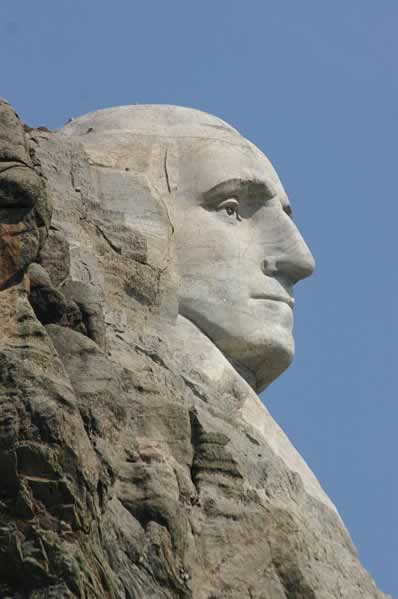
George Washington on Mount Rushmore
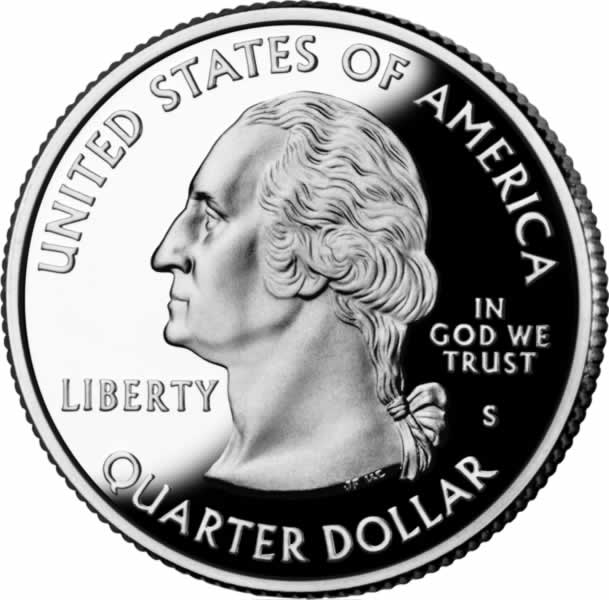
George Washington in profile, US Quarter
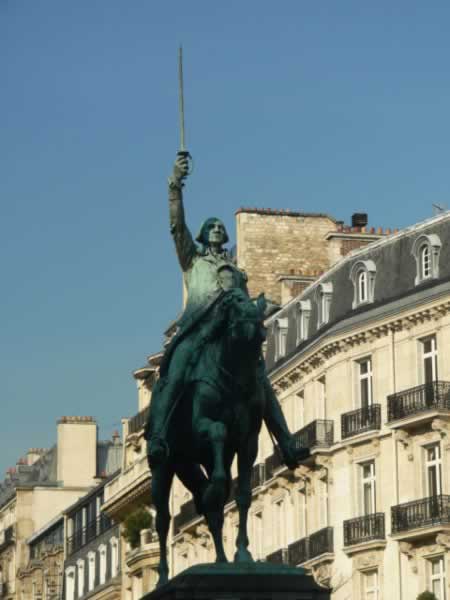
George Washington statue at the Place d'Iena, Paris, France
Many things have been named in honor of Washington. Washington's name became that of the nation's capital, Washington, D.C., and the State of Washington, the only state to be named after an American (Maryland, the Virginias, the Carolinas and Georgia are named in honor of British monarchs). George Washington University and Washington University in St. Louis were named for him, as was Washington and Lee University (once Washington Academy), which was renamed due to Washington's large endowment in 1796.
The Seal of the Confederate States of America prominently featured George Washington on horseback, in the same position as a statue of him in Richmond, Virginia.
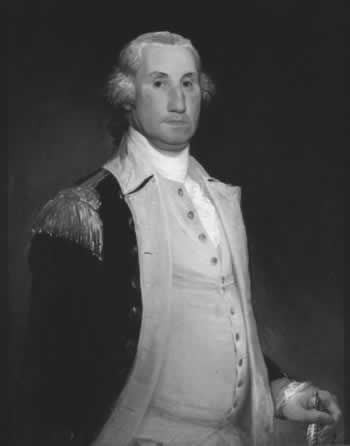
George Washington by Joseph Wright, 1784, finished by John Trumbull, 1786 and commissioned by Thomas Jefferson
For most of his life, Washington operated his plantations as a typical Virginia slave owner. In the 1760s, he dropped tobacco (which was prestigious but unprofitable) and shifted to hemp and wheat growing and diversified into milling flour, weaving cloth, and distilling brandy. By the time of his death, there were 317 slaves at Mount Vernon.
Before the American Revolution, Washington expressed no moral reservations about slavery, but, by 1778, he had stopped selling slaves without their consent because he did not want to break up slave families.
In 1778, while Washington was at war, he wrote to his manager at Mount Vernon that he wished to sell his slaves and "to get quit of negroes," since maintaining a large (and increasingly elderly) slave population was no longer economically efficient. Washington could not legally sell the "dower slaves," however, and because these slaves had long intermarried with his own slaves, he could not sell his slaves without breaking up families.
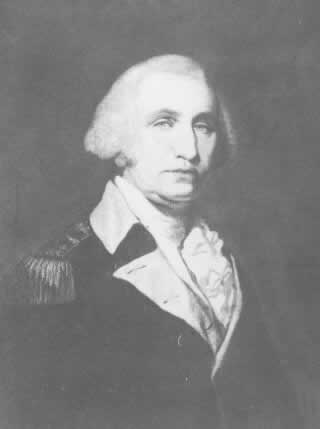
George Washington by James Sharples
After the war, Washington often privately expressed a dislike of the institution of slavery. Despite these privately expressed misgivings, Washington never criticized slavery in public. In fact, as President, Washington brought nine household slaves to the Executive Mansion in Philadelphia. By Pennsylvania law, slaves who resided in the state became legally free after six months. Washington rotated his household slaves between Mount Vernon and Philadelphia so that they did not earn their freedom, a scheme he attempted to keep hidden from his slaves and the public and one which was, in fact, against the law. Two slaves escaped while in Philadelphia: one of these, Oney Judge, was discovered in New Hampshire. Judge could have been captured and returned under the Fugitive Slave Act of 1793, which Washington had signed into law, but this was not done so as to avoid public controversy.
Washington was the only prominent, slaveholding Founding Father to emancipate his slaves. He did not free his slaves in his lifetime, however, but instead included a provision in his will to free his slaves upon the death of his wife. It is important to understand that not all the slaves at his estate at Mt. Vernon were owned by him. His wife Martha owned a large number of slaves and Washington did not feel that he could unilaterally free slaves that came to Mt. Vernon from his wife's estate. His actions were influenced by his close relationship with the Marquis de La Fayette. Martha Washington would free slaves to which she had title late in her own life. He did not speak out publicly against slavery, argues historian Dorothy Twohig, because he did not wish to risk splitting apart the young republic over what was already a sensitive and divisive issue.
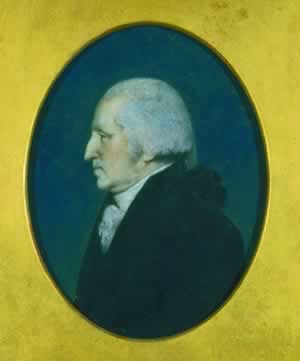
George Washington, pastel profile by James Sharples, 1796
Washington was baptized into the Church of England. In 1765, when the Church of England was still the state religion, he served on the vestry (lay council) for his local church. Throughout his life, he spoke of the value of righteousness, and of seeking and offering thanks for the "blessings of Heaven."
In a letter to George Mason in 1785, Washington wrote that he was not among those alarmed by a bill "making people pay towards the support of that [religion] which they profess," but felt that it was "impolitic" to pass such a measure, and wished it had never been proposed, believing that it would disturb public tranquility.
His adopted daughter, Nelly Custis Lewis, stated: "I have heard her [Nelly's mother, Eleanor Calvert Custis, who resided in Mount Vernon for two years] say that General Washington always received the sacrament with my grandmother [Martha Washington] before the revolution." After the revolution, Washington frequently accompanied his wife to Christian church services; however, there is no record of his ever taking communion, and he would regularly leave services before communion-with the other non-communicants (as was the custom of the day), until he ceased attending at all on communion Sundays. Prior to communion, believers are admonished to take stock of their spiritual lives and not to participate in the ceremony unless he finds himself in the will of God. Historians and biographers continue to debate the degree to which he can be counted as a Christian, and the degree to which he was a deist.

George Washington by Rembrandt Peale 1818
He was an early supporter of religious toleration and freedom of religion. In 1775, he ordered that his troops not show anti-Catholic sentiments by burning the pope in effigy on Guy Fawkes Night. When hiring workmen for Mount Vernon, he wrote to his agent, "If they be good workmen, they may be from Asia, Africa, or Europe; they may be Mohammedans, Jews, or Christians of any sect, or they may be Atheists." In 1790, he wrote a response to a letter from the Touro Synagogue, in which he said that as long as people remain good citizens, their faith does not matter. This was a relief to the Jewish community of the United States, since the Jews had been either expelled from or prejudiced against in many European countries.
Though Washington had no children, he did have two nephews. Bushrod Washington became an Associate Justice, and Burwell Bassett was a long-time congressman in both Virginia and the United States government.
Washington suffered from problems with his teeth throughout his life. He lost his first tooth when he was twenty-two and had only one left by the time he became President. According to John Adams, he lost them because he used them to crack Brazil nuts, although modern historians suggest it was probably the mercury oxide he was given to treat illnesses such as smallpox and malaria. He had several sets of false teeth made, four of them by a dentist named John Greenwood. Contrary to popular belief, none of the sets were made from wood. The set made when he became President was carved from hippopotamus and elephant ivory, held together with gold springs. The hippo ivory was used for the plate, into which real human teeth and also bits of horses and donkeys teeth were inserted. Dental problems left Washington in constant discomfort, for which he took laudanum, and this distress may be apparent in many of the portraits painted while he was still in office, including the one still used on the $1 bill.
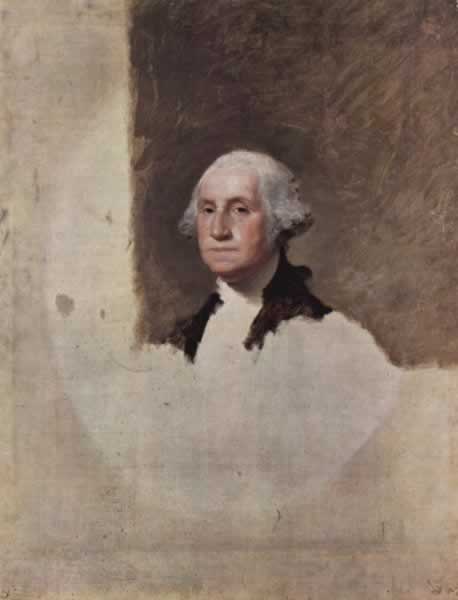
George Washington, unfinished portrait by Gilbert Stuart, 1796
As a young man, Washington had red hair. A popular myth is that he wore a wig, as was the fashion among some at the time. Washington did not wear a wig; instead he powdered his hair, as represented in several portraits, including the well-known unfinished Gilbert Stuart depiction.
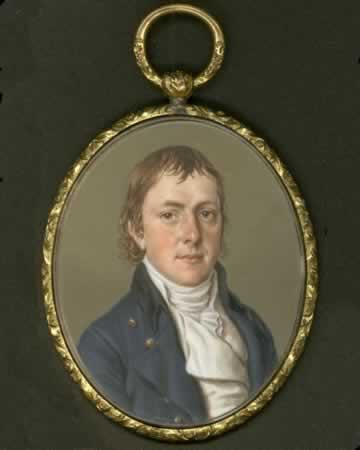
Miniature of a Young Man *This miniature is thought to have come from the Washington family estate, and features a young man with reddish hair. It is likely that this is a miniature of one of Washington's nephews, but it is quite possible that it is a miniature of Washington as a young man
One of the most enduring myths about George Washington involves him as a young boy chopping down his father's cherry tree and, when asked about it, using the famous line "I cannot tell a lie, I did it with my little hatchet." In fact, there is no evidence that this ever occurred. It, along with the story of Washington throwing a silver dollar across the Potomac River was part of a book of stories authored by Mason Weems that made Washington somewhat of a legendary figure.
There are numerous portraits of George Washington in existence today, many of which are housed in government offices and public collections. His visage has been emblazoned on coins, in the form of statues and busts and in oil many times over. The likelihood that other Washington portraits are in existence is very great, and in fact, they are quite common. The value of a Washington portrait can only be determined through research by art historians. A painting of George Washington created yesterday in China has almost no value in comparison to a late 1700's portrait painted by Gilbert Stuart.
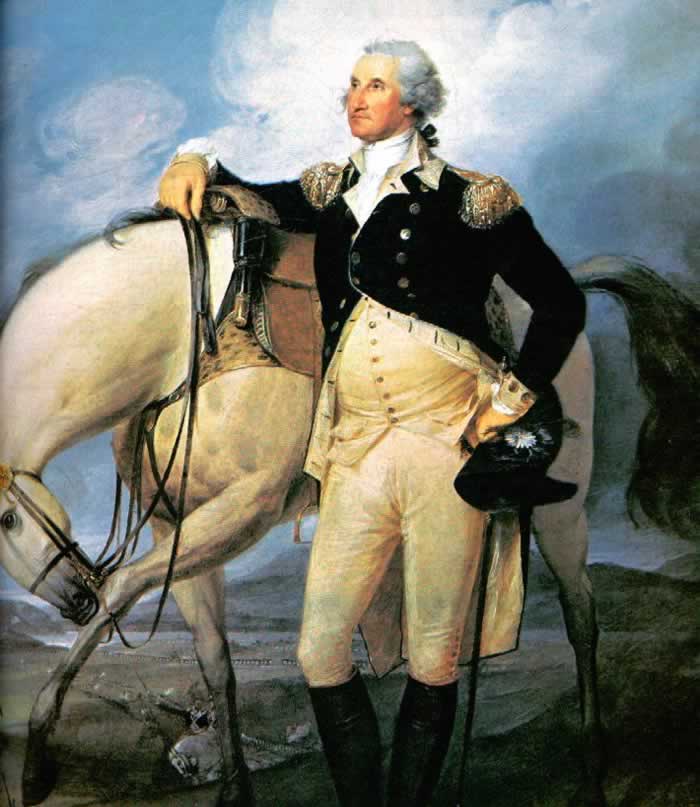
George Washington, 1782, artist unknown
Still wondering about a portrait in your family collection? Contact us... it could be a portrait of George Washington.
